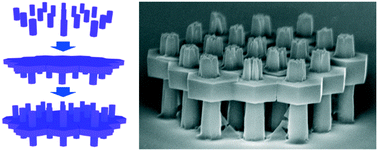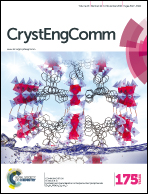Three-dimensional epitaxy of single crystalline semiconductors by polarity-selective multistage growth†
Abstract
Despite recent advances in three-dimensional (3D) fabrication, the epitaxial growth of finely controlled, single crystalline 3D structures is still constrained. In this study, we demonstrate the step-by-step growth of hierarchical 3D architectures composed of single crystalline semiconductors. To achieve this goal, we first established control of the preferential growth direction of ZnO crystals by polarity-selective crystallization during the low-temperature solution-phase synthesis. The time-dependent analysis showed that the binding of a citrate additive to the positively charged, top (0001) surface of ZnO crystals led to an inversion of the growth anisotropy from predominantly the vertical direction to the lateral direction with more than a 10 times increase in the width-to-height ratio. With further fine optimization of the charge balance, we minimized the interruption of citrate ions for epitaxial and iterative stacking of Zn and O ions, and achieved single-crystalline hexaplates. This feature was further combined with multistage epitaxial growth of the nanocrystal constituents, producing a 3D, single crystalline semiconductor with excellent luminescent characteristics.


 Please wait while we load your content...
Please wait while we load your content...